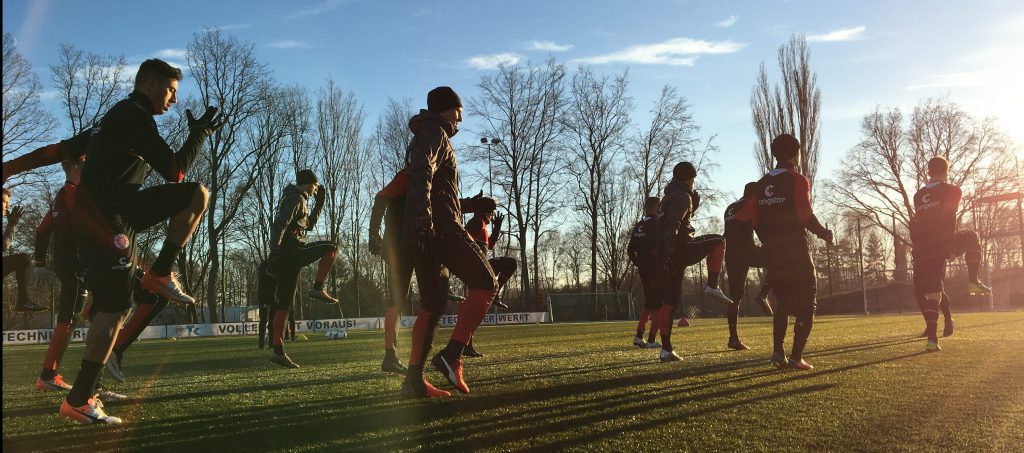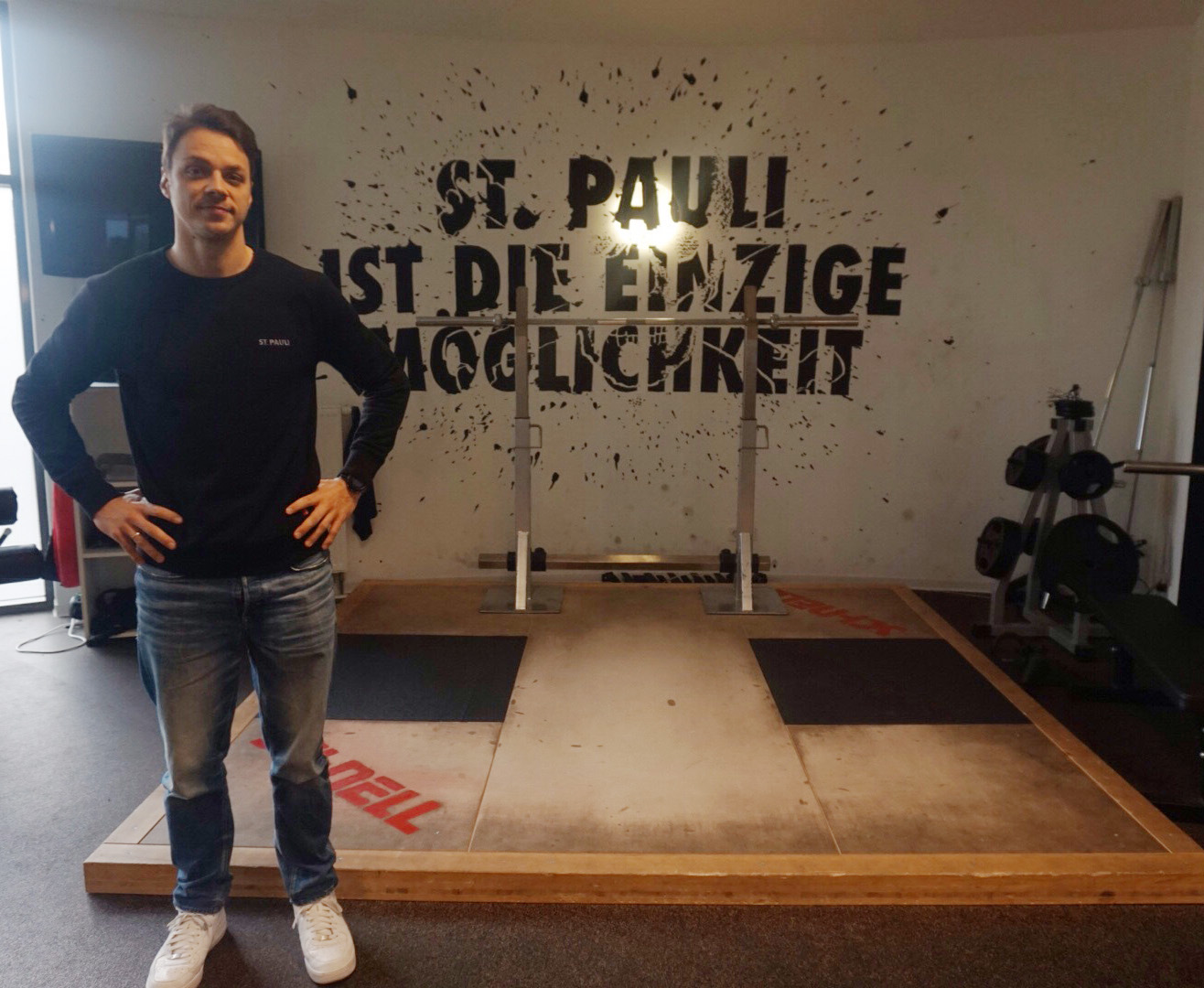Omegawave: What is your approach to training and recovery management?
Janosch Emonts [Translated from German by Omegawave]: I believe that recovery is key in the training process, especially with regards to injury prevention. Before every training, we want to know how ready our players are so that we can optimally treat each of them. Post-training, we seek to find the appropriate recovery activities for either the whole team or individual players in order to increase their readiness for the upcoming day. Thus, we aim at successfully improving our athletes’ strength, while at the same time trying to lower the risk of overreaching, overtraining, and injury.
In my opinion, recovery management will be increasingly important in the future, especially given all stressors that take place outside of the training facility, such as stress caused by media exposure, travel time, an increasing amount of games, and so on.
Particularly during times of mid-week games, when we cannot impose high training loads, we’d rather control the recovery side in order to get the players ready for the next match. At those times, individualized recovery management is crucial.
OW: How do you collect the data?
JE: For a year now, we’ve used a variety of systems to collect numerous streams of data. In the morning, our players use Omegawave—they assess themselves individually at home. Before training, we then have all the Omegawave data from the players already in our [Omegawave Coach] system. At the same time, we also use a subjective questionnaire with the players. We then try to analyze all the data together with the medical team and the other coaches. This approach also fosters communication between the medical staff and us coaches.

The FC St. Pauli squad warming up on their training ground in Hamburg (© FC St. Pauli).
Very often, the feedback from the medical team correlates to the Omegawave data. In fact, once we receive their recommendations, we put it in context with the Omegawave data in order to determine whether there are muscular problems inhibiting the player’s performance or whether the central nervous system is the limiting factor for upcoming trainings. We then communicate the combined feedback to the head coach [Ewald Lienen] and provide him with a general recommendation for the training. For example, if there is a very hard training scheduled for the team, but a player is not able to cope with this load, then we would individualize a part of the training for this player and reduce the overall load. As a next step, we then also try to provide individualized recovery modalities.
Everyday, the team does recovery activities as a whole, but we also provide individualized tips to certain players if necessary. For example, the team does activities such as joint foam rolling, warm-down runs, stretching exercises, or mobilization techniques. With certain players, however, we might also recommend doing alternating baths after the training, and with others we teach meditation techniques which they can do at home to improve recovery.
OW: How does Coach Lienen take your recommendations into consideration and put the data into practice?
JE: We have a training plan for every week, during which we first discuss and then implement training sessions according to current periodization models. For this we also take into consideration the daily recommendations of the medical team. We discuss possible health problems and injuries, translating the combined feedback into specific training recommendations. Usually, the coaches are very open to this type of feedback and also work according to the given feedback.
OW: Could you elaborate on a few instances where the data was surprising to you, as well as how you dealt with those cases?
JE: Basically, we see that every player responds differently to the same load. In my opinion, that is the entire idea behind our approach.
Ultimately, we seek to follow a more dynamic periodization model that considers the readiness of every player every single day. There are many factors that determine a player’s freshness, such as the training itself or non-training-related stressors that we simply cannot influence.
At times, we also saw players that displayed extraordinary athletic abilities during performance tests while at the same time showing very fast recovery processes. That surprised us, having athletes that can do anything without displaying major fatigue. Despite this being the exception, the team training still has to help those players to reach their limits. Otherwise, they might think that they haven’t done enough—we can even see this in their assessment data. Ultimately, we then train with those players more by implementing additional runs or power and strength exercises.
At the same time, we also see players that don’t recover as we hope they would. We then try to discover potential reasons and question the training plan and training intensities. However, sometimes it is impossible to predict how certain players will recover, because we cannot control all the possible stressors. We have to be considerate of those players, and this also fosters communication—we get to know them better and we provide them with individualized recovery recommendations so they can ultimately reach their full performance potential.
OW: To conclude, what is your ultimate vision with regards to training and recovery management?
JE: Primarily, we have an integrated system of training periodization. This depends on the training philosophy of the coach, including what particular exercises are to be done. The athletic training during the competition phase—and even in the preparation phase—is planned around the head coach’s training schedule. In this regard, we want to prepare the players for upcoming loads. Generally, we have a structured plan for every month, week, and day, while at the same time taking into consideration individual player readiness in order to ensure optimal training stimuli.
Within the preparation phase, it is our goal to guide the players to achieve a significantly higher physical level in a short amount of time. At the same time, they have to train sport-specifically by performing technical and tactical drills. In other words, the athletic training is only a supporting piece here.
During the competition phase, we seek to continuously maintain the performance level of the players. Of course, we still also try to achieve improvements if the players’ potential allows for it. Simply put, for us it matters that the players are ready on match day. Though it’s always a big challenge to find the balance between imposing the right training stimuli to further improve physical capabilities and having the players at least ninety to one-hundred percent recovered for the game. I think we are just at the beginning with this approach, and we are getting interesting data with the readiness assessments that will help us to further improve our training.
